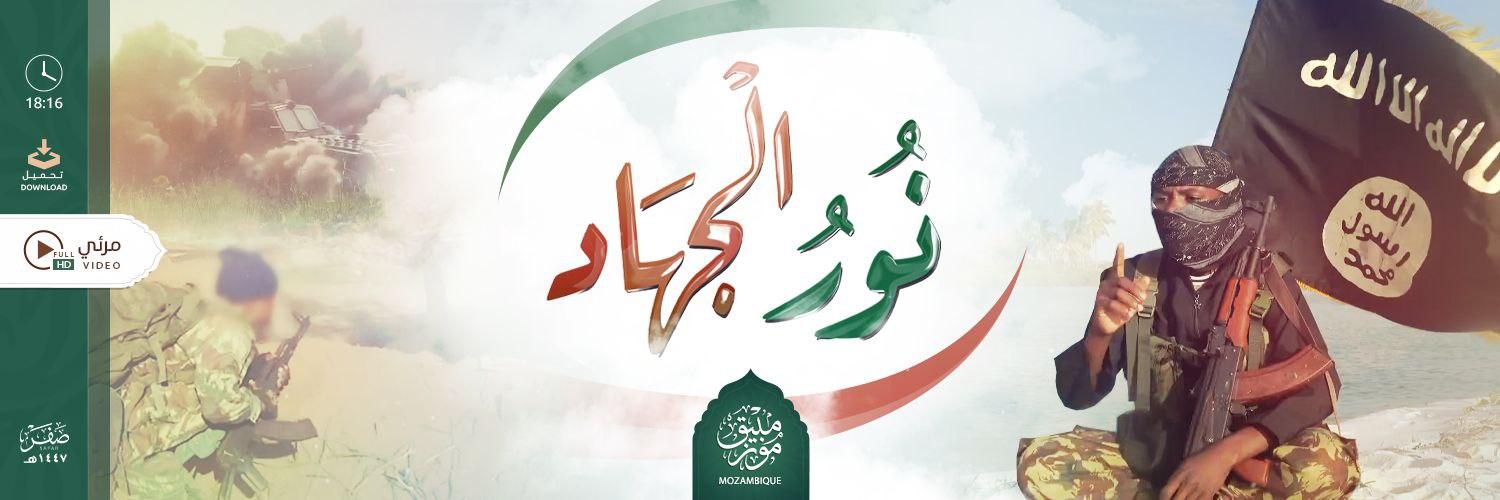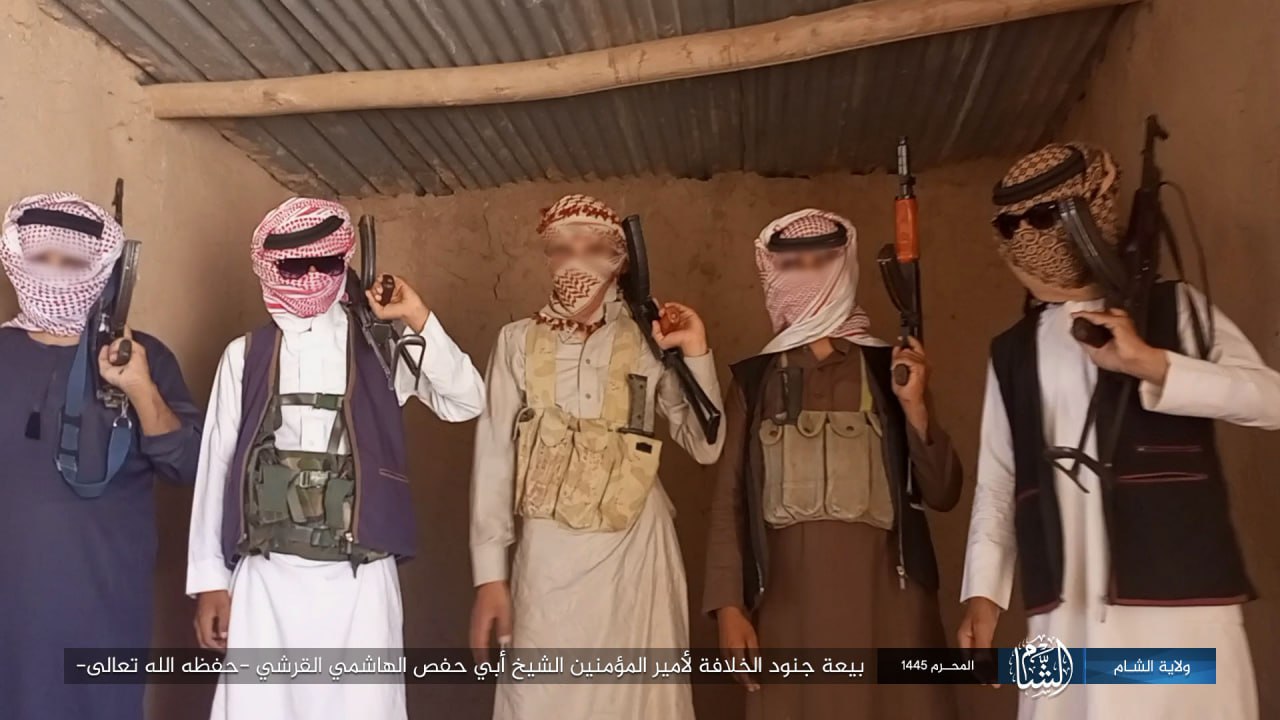
__________________
Source: RocketChat
To inquire about a translation for this video message for a fee email: [email protected]

__________________
Source: RocketChat
To inquire about a translation for this video message for a fee email: [email protected]

The Islamic State today looks different than it did five years ago and is far more integrated now as an organization amongst its global network than al-Qaeda ever was. It has been 10 years since the Islamic State announced itself as a caliphate and more than five years since it lost its last vestige of territory in Syria. However, with the Islamic State back in the news due to an increasing external operations capacity (with attacks in Iran, Turkey, and Russia this year as well as numerous broken up plots in Europe), there is a fundamental misunderstanding of how the group operates today. In many ways, it is either incorrectly viewed through the lens of how al-Qaeda operates (a decentralized branch network), since it had previously been a part of al-Qaeda’s global network, or based on how the Islamic State operated when it was at its prior zenith when it controlled territory in Iraq and Syria. It is also likely why some within the U.S. government may have misinterpreted signals intelligence by pushing the idea that the Islamic State leader targeted in Somalia at the end of May, Abd al Qadir Mumin, became the group’s caliph. These changes in the past five years are crucial for policymakers to understand because the way the threat presents itself today will look different from how policymakers dealt with the issue last decade when much of the focus was on the Islamic State’s territorial control in Iraq and Syria.
The most important body for understanding the Islamic State today is its General Directorate of Provinces, which has previously been based in Syria, but new information suggests that at least at the highest levels of it might now have centrality in Somalia. When one understands that structure, the Islamic State’s actions globally make more sense. It is also why we see far more interaction and connection between its various wilayat (provinces) today than in the past. In many ways, the key aspects that animate the Islamic State as an organization (governance, foreign fighter mobilization, and external operations) remain, they have just moved from primarily being based out of or controlled by its location of origin in Iraq and Syria to being spread across its global provincial network. Its aims remain the same, even if the organization has adapted to a changed environment. It is also why the challenge from the Islamic State today is different from the past and why it is in some ways also more resilient now to pressure than before.
This makes the challenge of the Islamic State more difficult from a security perspective than in the past when there was the ability to primarily zero-in on its efforts in Iraq and Syria. Today, only focusing on Iraq and Syria or any other province independent of understanding its connections to other parts of the group’s global network will lead to missing crucial details due to expediency. This is why, although it is understandable that the United States has shifted a lot of its manpower and budgeting to more existential and larger problem-sets such as China and Russia, it would be a mistake to neglect the Islamic State as a continuing, but evolving security challenge. Therefore, it is still useful to continue to have and add more funded government positions across different agencies and departments to focus on tracking this threat to better get ahead of the next surprise. Otherwise, mistakes of misinterpretation will be made as in the past.
Click here to read the rest.

On March 21, 2023, The Washington Institute launched the Islamic State Select Worldwide Activity Map as a way to better track and understand the global jihadist organization’s status. The ongoing project includes data on IS propaganda, claims of responsibility, financial sanctions, arrests, and other factors, providing a more holistic view of the group than attack data alone.
A year later, the data collectively paints a sobering picture. Although the core IS “provinces” in Iraq and Syria remain degraded, the group has been able to diversify at the periphery, with the Khorasan province in Afghanistan (aka IS-K) spearheading external operations while various other provinces establish territorial control in Africa. IS supporters continue to plot major terrorist attacks as well, especially in Turkey, though most of these have been thwarted by law enforcement (with the notable exception of the January 2024 bombings in Kerman, Iran). Given these evolving threats, it is worthwhile to explore the findings of the IS Activity Map project in greater detail, since they can provide a clearer picture of where the organization stands today amid growing calls to dissolve the global coalition tasked with fighting IS.
Click here to read the rest.

Nearly five years after losing territorial control in its core areas of Iraq and Syria, the Islamic State is once again racking up territorial gains around Africa. In Mali, IS forces seized portions of the rural eastern Menaka region and the Ansongo district in southern Gao last year, while foreign fighters reportedly became more interested in traveling to Wilayat Sahel, the group’s self-styled “Sahel Province.” Elsewhere, IS “provinces” in Somalia and Mozambique have taken over various towns in the Puntland and Cabo Delgado regions over the past two months, further destabilizing the area and in some cases jeopardizing important natural gas projects.
Click here to read the rest.
There are two main reasons for this: 1. pledges are leader-specific rather than group-specific and thus need to be renewed with each succession and 2. it is a way to legitimize al-Qurashi’s rule and create a media event so that the group can promote itself as it transitions to a new phase.
The first reason is also something that IS pointed to when it began to overtly feud with al-Qaeda (AQ) in 2013, by saying that following Abu Mus’ab al-Zarqawi’s death, his successor Abu Hamzah al-Muhajir gave baya to the newly created Islamic State of Iraq’s leader Abu ‘Umar al-Baghdadi and even after Abu ‘Umar was killed, when Abu Bakr al-Baghdadi took over in 2010 and then Usamah Bin Laden was killed in 2011, Abu Bakr never publicly gave baya to Ayman al-Zawahiri, even if al-Zawahiri claims he gave it to him privately. Therefore, from the perspective of IS this whole process is not trivial, but important for legitimacy of its leadership and to potentially weed out any insubordination before it manifests into something larger as it already did in the past vis-a-vis AQ.
This post will be updated with the latest official pledges.
—
August 5, 2023:
Wilāyat al-‘Irāq









Wilāyat Gharb Ifrīqīyah – Krenoa Region







August 6, 2023:
Wilāyat al-Ṣūmāl











Wilāyat al-Yaman











August 7, 2023:
Wilāyat al-Sāḥil – Tri-Border Area














Wilāyat Bākistān












August 8, 2023:
Wilāyat Wasaṭ Ifrīqīyah












Wilāyat al-‘Irāq


















Wilāyat Gharb Ifrīqīyah – al-Buhayrah Region
















Wilāyat al-Sāḥil – Anderamboukane
















August 9, 2023:
Wilāyat Khurāsān
















Wilāyat Gharb Ifrīqīyah – Sambisa Region











Wilāyat al-Sāḥil – Azawagh





















August 10, 2023:
Wilāyat al-Shām




















Wilāyat Gharb Ifrīqīyah – al-Faruq Region and Banki Region













August 11, 2023:
Wilāyat al-‘Irāq















August 12, 2023:
Wilāyat Sharq Asīā












August 14, 2023:
Wilāyat Mūzambīq

















Wilāyat Bākistān










Wilāyat Sāḥil – Burkina Faso














August 16, 2023:
Wilāyat al-‘Irāq


























Wilāyat al-Shām



























There are two main reasons for this: 1. pledges are leader-specific rather than group-specific and thus need to be renewed with each succession and 2. it is a way to legitimize al-Qurashi’s rule and create a media event so that the group can promote itself as it transitions to a new phase.
The first reason is also something that IS pointed to when it began to overtly feud with al-Qaeda (AQ) in 2013, by saying that following Abu Mus’ab al-Zarqawi’s death, his successor Abu Hamzah al-Muhajir gave baya to the newly created Islamic State of Iraq’s leader Abu ‘Umar al-Baghdadi and even after Abu ‘Umar was killed, when Abu Bakr al-Baghdadi took over in 2010 and then Usamah Bin Laden was killed in 2011, Abu Bakr never publicly gave baya to Ayman al-Zawahiri, even if al-Zawahiri claims he gave it to him privately. Therefore, from the perspective of IS this whole process is not trivial, but important for legitimacy of its leadership and to potentially weed out any insubordination before it manifests into something larger as it already did in the past vis-a-vis AQ.
This post will be updated with the latest official pledges.
—
December 1, 2022:
Wilāyat Gharb Ifrīqīyah – Sambisa Region











Wilāyat Khurāsān




























Wilāyat al-‘Irāq

























Wilāyat Gharb Ifrīqīyah – al-Buhayrah Region





December 2:
Wilāyat Gharb Ifrīqīyah – al-Faruq Region

















Wilāyat al-Shām

































Wilāyat Gharb Ifrīqīyah – Banki Region






December 3:
Wilāyat al-Yaman




Wilāyat Gharb Ifrīqīyah – Krenoa Region





Wilāyat al-‘Irāq
















Wilāyat al-Sāḥil – Azawagh, Tri-Border, and Burkina Faso Regions





























December 4:
Wilāyat al-Ṣūmāl




















Wilāyat Wasaṭ Ifrīqīyah







Wilāyat al-Sāḥil – Anderamboukane Village









December 5:
Wilāyat Gharb Ifrīqīyah – Central Nigeria






Wilāyat al-Shām





















Wilāyat Bākistān















Wilāyat Mūzambīq






Wilāyat Wasaṭ Ifrīqīyah – Beni Region




December 7, 2022:
Tūnis


Wilāyat al-Hind – Kashmir








Wilāyat Mūzambīq – Nangade Region





December 8, 2022:
Lubnān






December 14, 2022:
Wilāyat Saynā’




December 17, 2022:
Wilāyat Sharq Asīā




December 19:
Wilāyat Lībīyā



